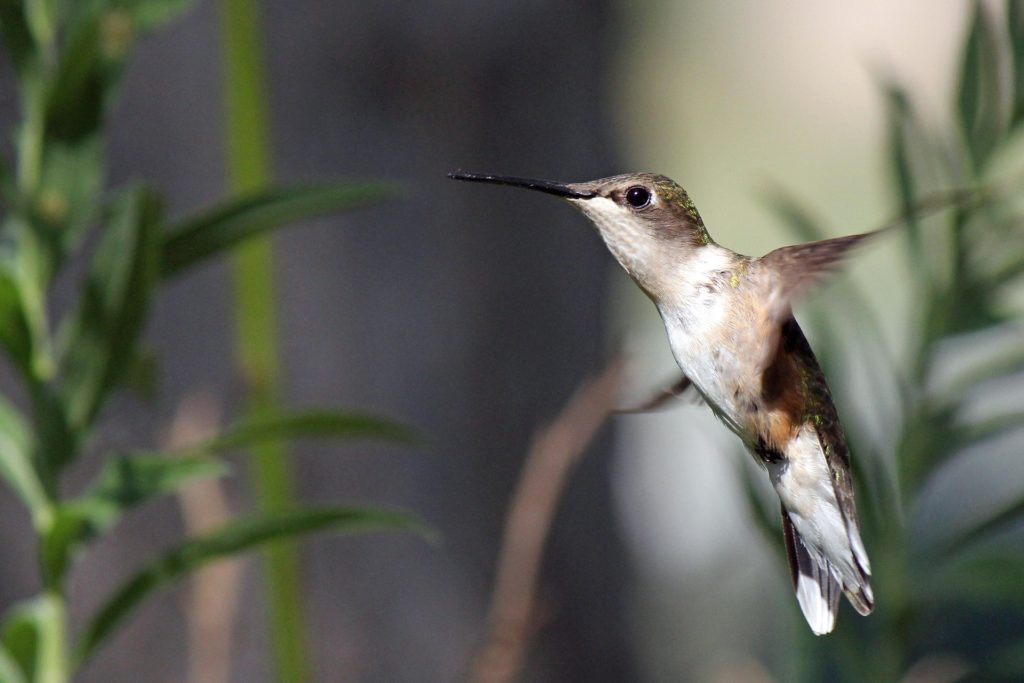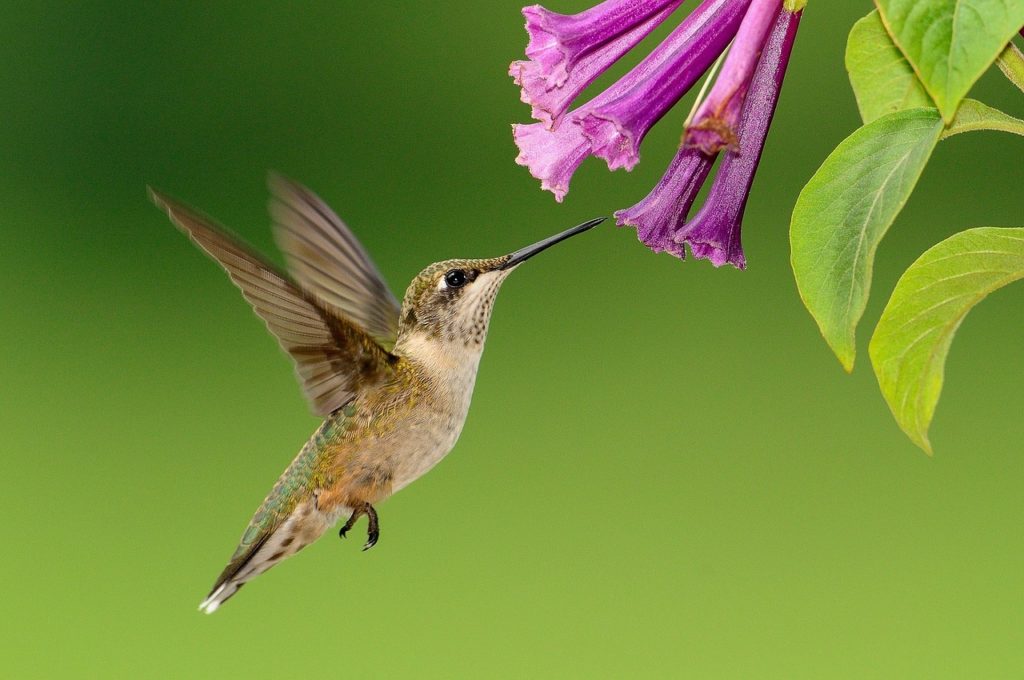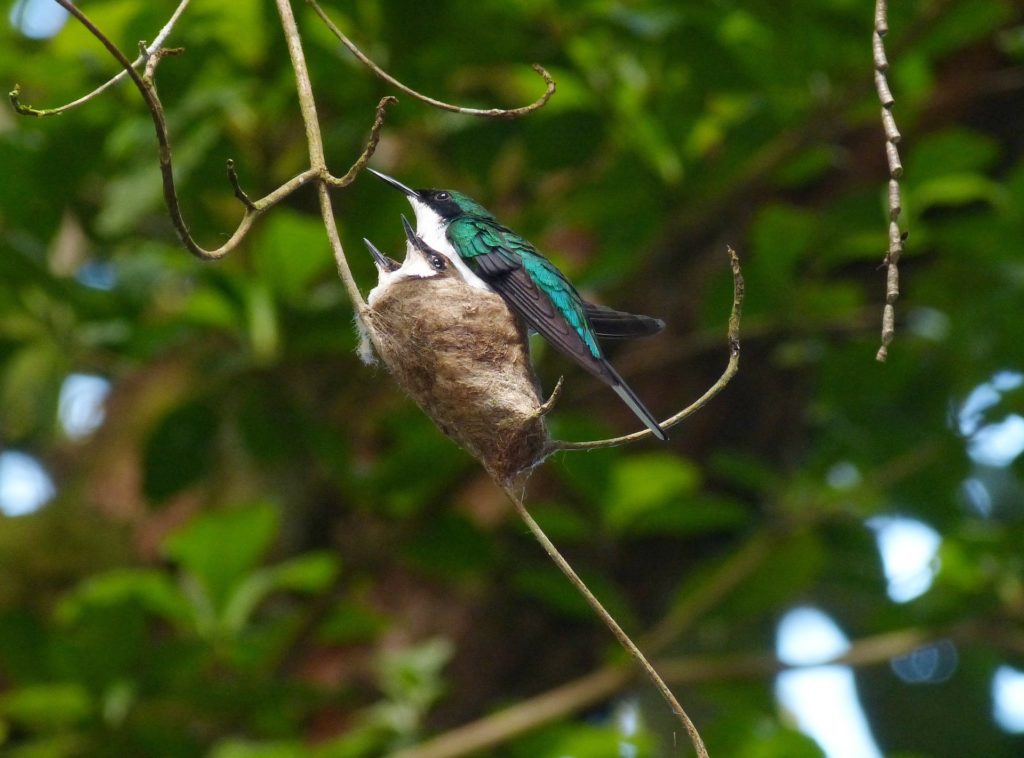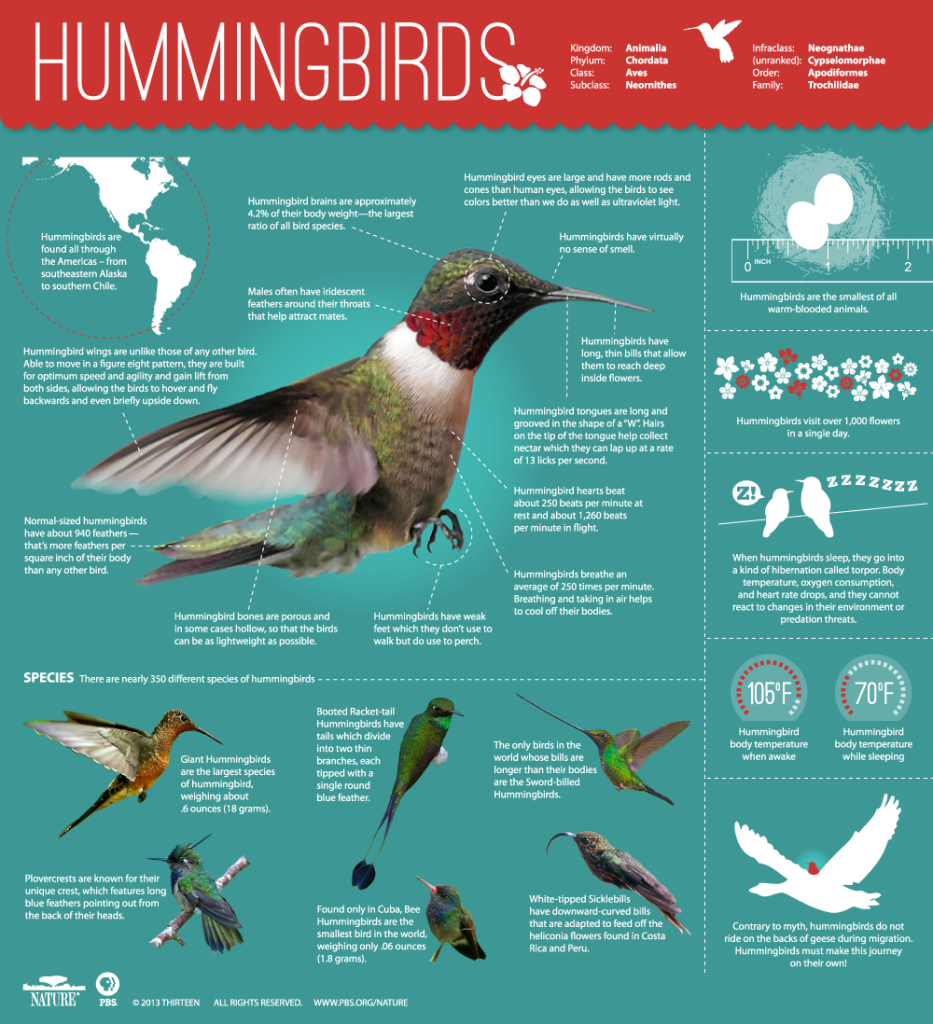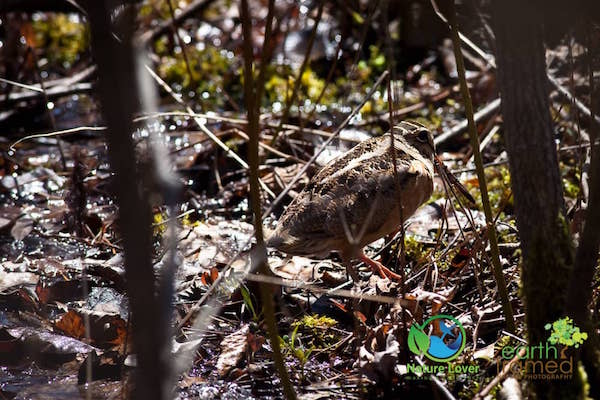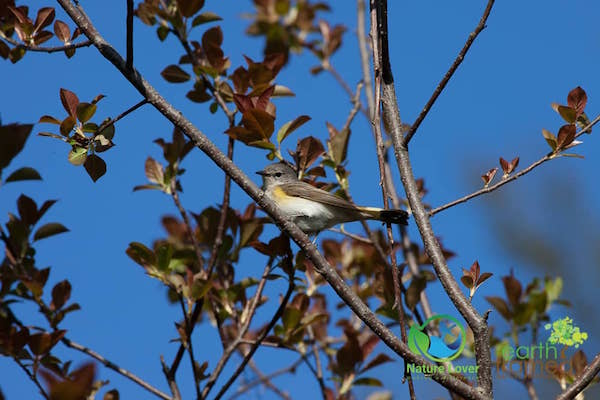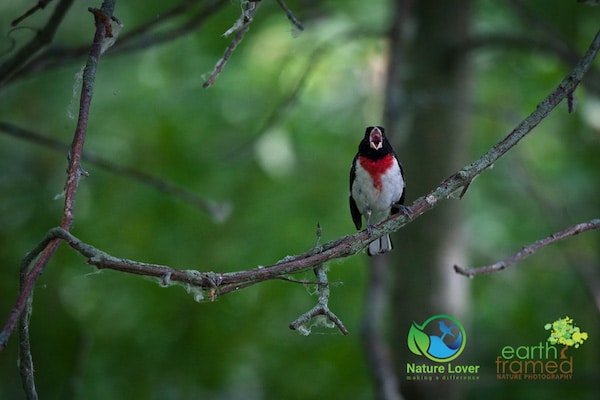Hummingbirds are the smallest birds in the world and while there are over 320 different species throughout the Americas, there is only one that breeds here in Ontario: the Ruby-throated Hummingbird. On average a hummingbird is about 1.75 inches long, weighs less than an ounce and lives about 4 years.
Hummingbirds flap their wings about 80 times per second and and fly in any direction, including upside down. As you have probably seen, hummingbirds can also easily hover by flapping their wings in a figure – 8 pattern. These tiny creatures have tiny feet that are only used for perching, never walking or hopping.
Habitat
Hummingbirds can be found in various habitats throughout the Americas from temperate woodlands, to mountain meadows, cloud forests, tropical rainforests and deserts. Basically, hummingbirds will live whether there is an abundance of flowers for them.
Diet
Hummingbirds need a lot of food to maintain their extremely fast breathing rate, high body temperatures and fast heartbeat. They eat flower nectar, tree sap, insects and pollen. These food sources are very high in energy.
Reproduction
After some very elaborate courtship rituals, the male and female hummingbirds go their separate ways and the female is left to build its nest and raise its young. She will spend hours collecting plant parts and spider webs to weave a small cup where she will lay her eggs. After the nest is built, she will add lichen to camouflage it and then lay two tiny eggs about the size of a pea. The chicks will hatch between 14 and 21 days after being laid. These chicks will be fledged in about 5-6 weeks.
Threats
In the past, hummingbirds were killed for their feathers but now habitat loss is the main threat. Other dangers that can threaten hummingbirds are extreme weather events, predators and man-made obstacles like buildings and cars.
[two_third_last]
[/two_third_last]
Sources:
“Basic Facts About Hummingbirds.” Defenders of Wildlife. N.p., 19 Aug. 2014. Web. 18 Oct. 2016.
Charity, OneKind Animal. “Hummingbird.” Amazing Facts about Hummingbirds | OneKind. N.p., n.d. Web. 18 Oct. 2016.
“Hummingbirds 101.” Hummingbirds 101. N.p., n.d. Web. 18 Oct. 2016.
“HUMMINGBIRD REPRODUCTIVE BEHAVIOR.” Hummingbird: Reproduction, Courtship, Nesting, Incubation. N.p., n.d. Web. 18 Oct. 2016.
World of Hummingbirds .com – Admin@worldofhummingbirds.com. “World of Hummingbirds .com.” Hummingbird Habitats. N.p., n.d. Web. 18 Oct. 2016.



